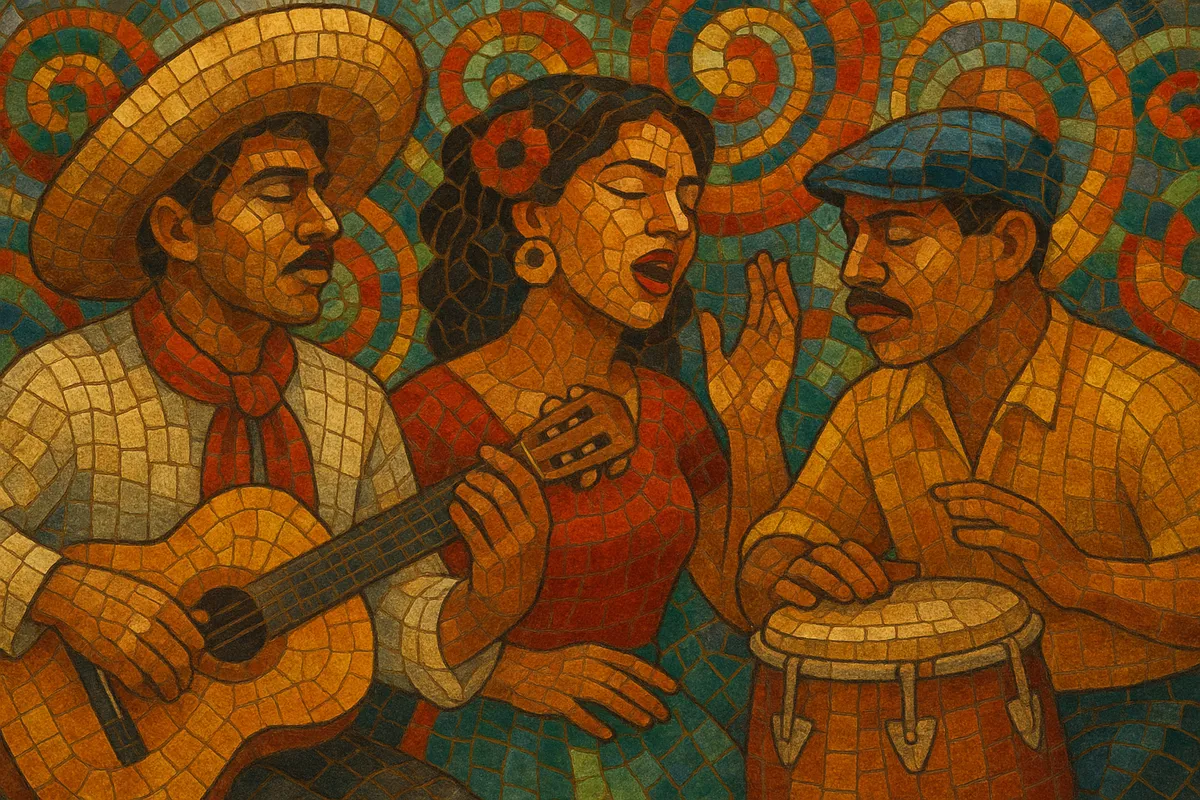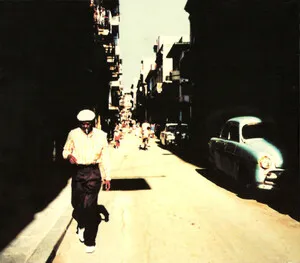Hispanic American music is the vast body of musical traditions created in the Spanish‑speaking Americas, blending Iberian (Spanish) song and dance practices with Indigenous American musics and powerful West and Central African rhythmic and vocal heritages.
It spans sacred and secular repertoires, rural and urban settings, and folk, classical, and popular styles—from Mexican sones and mariachis to Andean huaynos, Caribbean son and salsa, Southern Cone tango, and contemporary Latin pop and reggaeton.
Common musical fingerprints include the use of Spanish language lyrics; sesquiáltera (hemiola) interplay between 3/4 and 6/8; Afro‑diasporic cells such as tresillo, cinquillo, and the clave (2‑3 or 3‑2); melodic ornamentation derived from Iberian song; and harmonies ranging from simple I–IV–V cadences to jazz‑inflected ii–V–I progressions.
As both a cultural umbrella and a living set of practices, it has continually evolved through migration, media, and transnational exchange, shaping—and being shaped by—dance, identity, and social history across the Americas.
With the Spanish colonization of the Americas, Iberian sacred and secular musics (plainchant, villancico, courtly and folk dances) met Indigenous traditions and enslaved Africans’ musical practices. In cathedrals, chapels, and town plazas, this led to hybrid repertoires: Spanish‑texted pieces with local rhythms, Indigenous instruments, and African call‑and‑response and polyrhythms. The sesquiáltera (3:2 hemiola) and early Afro‑Caribbean rhythmic cells took root across Mexico, the Andes, and the Caribbean.
After independence, regional identities coalesced into emblematic styles: Mexican son and mariachi, Argentine and Chilean cueca, Cuban contradanza and danzón, and Andean huayno. European salon music (waltz, polka), Italian bel canto, and local poetry forms (copla, décima) interacted with folk practices, fostering both urban salons and rural fiestas.
Recording and radio industries in Havana, Mexico City, Buenos Aires, and New York amplified bolero, son cubano, tango, and ranchera across the hemisphere. Jazz and big‑band arranging merged with Afro‑Caribbean dance musics, catalyzing mambo, cha‑cha‑chá, and later salsa. Diasporic communities in New York and Puerto Rico drove pan‑Latin innovation, while Mexican and Andean circuits sustained strong folk‑popular continuities.
Salsa matured alongside nueva canción’s socially conscious folk idioms. Rock en español and Latin pop connected youth markets across borders. Tejano and regional Mexican styles flourished in the U.S., while Andean and Caribbean genres globalized through touring and world‑music circuits.
Streaming and social media accelerated cross‑regional collaboration. Reggaeton and Latin trap (largely Spanish‑language, Caribbean‑rooted) entered the global mainstream; salsa, bachata, cumbia, and mariachi continue to reinvent themselves. Today, Hispanic American music functions as a transnational ecosystem—rooted in Iberian, Indigenous, and African foundations—continually refreshed by migration, technology, and dance culture.
Blend Iberian songcraft, Indigenous modalities/timbres, and Afro‑diasporic rhythms. Favor Spanish lyrics, strong dance grooves, and memorable melodic hooks. Use call‑and‑response between lead and chorus (coro) to energize refrains.



![Los Jaivas [El indio]](https://e.snmc.io/i/300/w/39998b45d6e4d6685c920ec7694c0874/13857342/Los%20Jaivas%20-%20Los%20Jaivas%20%5BEl%20indio%5D%2C%20Cover%20art.webp)




